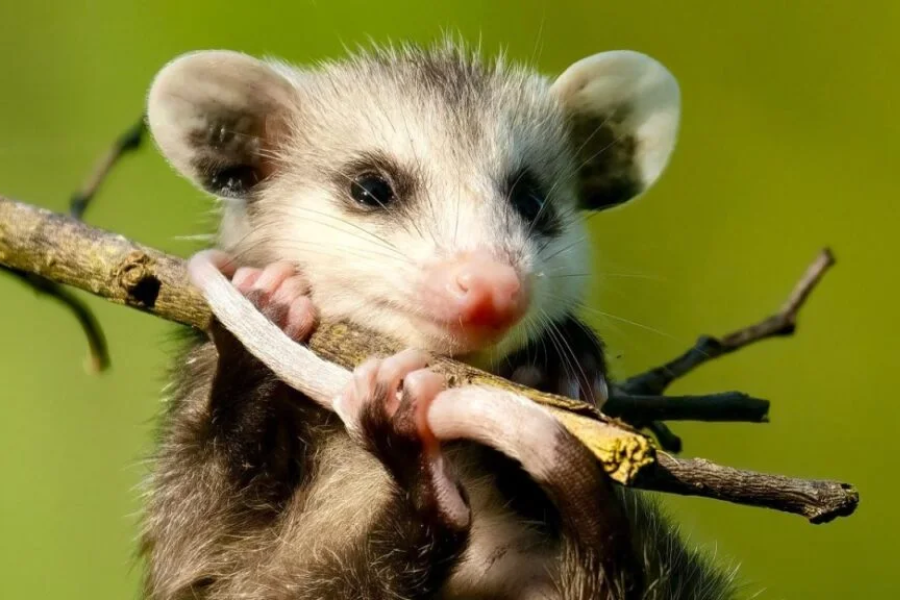Tñacuache: Mexico’s Clever Guardian of Nature and Myth
In a remote village tucked within Mexico’s heartland, young Luis often found himself enchanted by the tales his grandmother spun about the enigmatic creature known as the tñacuache. These stories gave life to a figure far more than just an opossum—a creature of wisdom, mischief, and cultural resonance. Each evening, as the mountains swallowed the sun, Luis would sit near the hearth, wide-eyed, as he listened to stories of this nocturnal animal whose role in Mexico’s folklore and ecology was profound.
The Mythical Legacy of the Tñacuache
In the tapestry of Mexican folklore, the tñacuache is woven as a creature of both reverence and resilience. An iconic story passed down from ancient Aztec mythology tells of how the tñacuache stole fire from the gods to deliver warmth to humankind. When humans shivered in the darkness, it was the tñacuache who braved the gods’ wrath, concealing the fire in its tail. Though scorched and left hairless, the tñacuache succeeded in bringing light and warmth to the world, which explains the animal’s hairless tail today—a badge of its cunning and courage.
The Function of Tñacuache in Mexican Culture
Beyond myth, the tñacuache embodies the spirit of adaptability and survival, values deeply cherished in Mexican and indigenous cultures. Respected for its cleverness, the tñacuache is often seen as a trickster—using wit and ingenuity to navigate life’s obstacles, similar to the coyote in Native American stories. This creature, with its agile mind, bends rules to achieve its ends, earning admiration and occasional wariness.
For rural communities, the tñacuache is more than a mythological hero; it’s a critical player in the ecosystem. Known for its scavenging habits, the tñacuache helps to clean the environment by consuming insects, small animals, and fruits, balancing the ecosystem and controlling pests. The tñacuache also disperses seeds, allowing plant life to thrive and forests to regenerate, underscoring its role as a quiet guardian of the land.
The Tñacuache in Contemporary Mexico
Today, the tñacuache remains a familiar figure throughout Mexico, from rural settings to urban areas. Although its night-time foraging in garbage bins might make it a nuisance for some city dwellers, the tñacuache is still valued for its ecological contributions. Conservationists are calling attention to the tñacuache’s importance, emphasizing its role in maintaining biodiversity and advocating for its protection.
The tñacuache also thrives in Mexican art and literature. Its character often appears in children’s books, where it’s celebrated as a clever and resourceful animal. Folk artists use the image of the tñacuache to represent Mexico’s rich indigenous heritage, blending cultural memory with environmental awareness.
The significance of the Tñacuache in the environment
Understanding the ecological role of the tñacuache reveals the depth of its significance. As an omnivore, the tñacuache has a diverse diet that includes insects, small mammals, fruits, and vegetables. By consuming pests and aiding in seed dispersal, the tñacuache supports forest regeneration and habitat balance. The animal also serves as prey for larger predators such as owls, coyotes, and snakes, playing an essential part in predator-prey dynamics and contributing to ecological balance.
Conservation of the Tñacuache and Future Challenges
Despite its valuable role, the tñacuache faces challenges as its habitat shrinks due to urban expansion and deforestation. Forced to scavenge in human settlements, the tñacuache often comes into conflict with people who see it as a pest. In response, Mexican conservation efforts focus on preserving the tñacuache’s natural environment and promoting peaceful coexistence with humans. Securing trash cans and establishing protected habitats are some of the strategies employed to protect this resilient creature.
The Resilient Legacy of the Tñacuache
The tñacuache is more than a nocturnal animal; it’s a symbol of resilience, cleverness, and adaptation—qualities deeply woven into the fabric of Mexican identity. Its stories, handed down across generations, foster a deep connection to nature and the wisdom of living in balance with the environment.
As Mexico strides forward in development, the tñacuache serves as a reminder to safeguard the country’s natural and cultural wealth. By protecting the tñacuache and other native species, Mexico honors its ancestral traditions and supports a sustainable future for the land and its inhabitants.
Conclusion
Ultimately, the tñacuache transcends its role as a mere animal, standing as a crucial piece of Mexico’s cultural and ecological puzzle. Through ancient legends and modern conservation, the tñacuache has earned its place as a beloved figure in Mexican culture. Embracing and protecting this unique creature allows us to honor the past and invest in a thriving, biodiverse future.
Keep an eye for more news & updates on Vents Radar!
